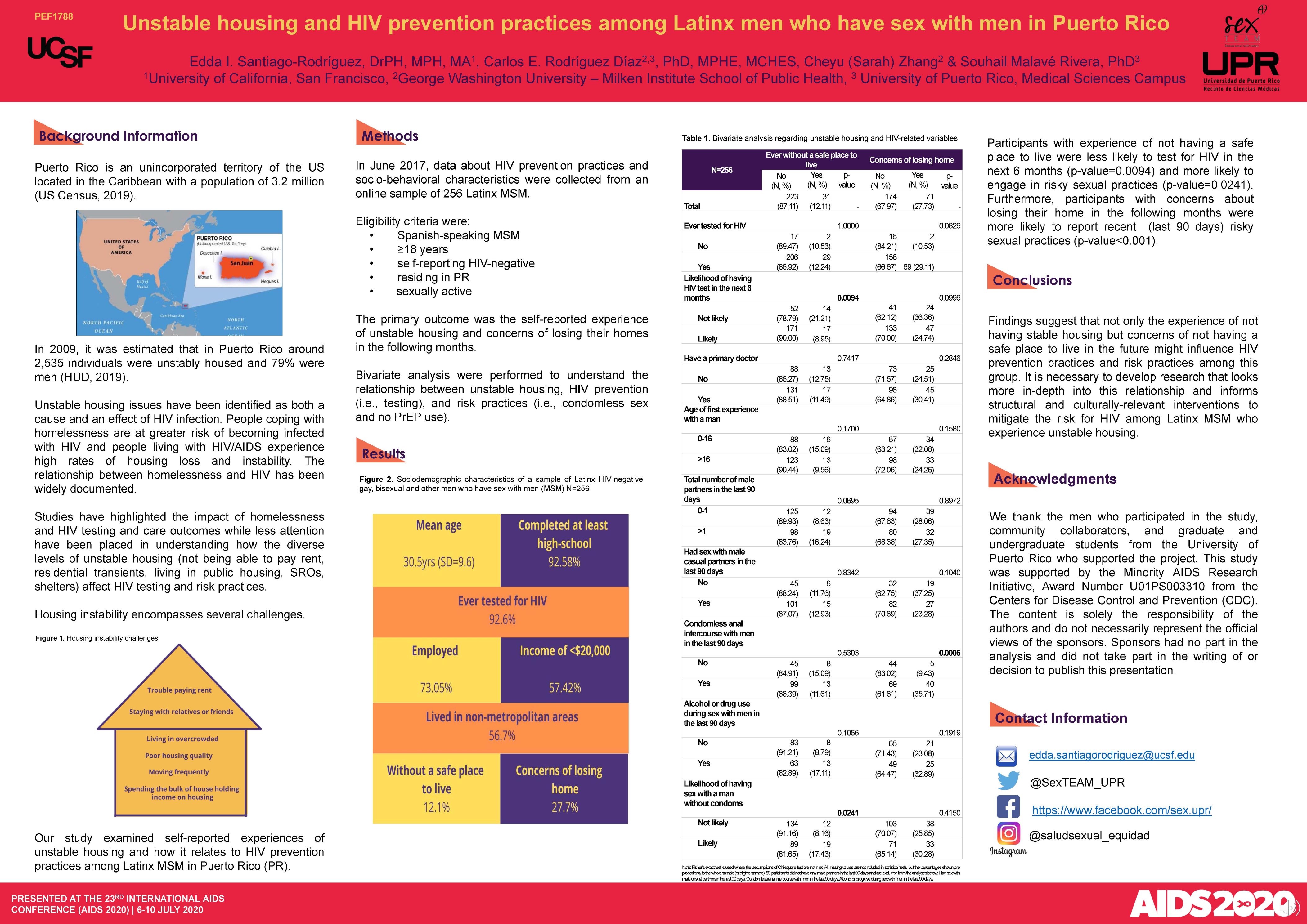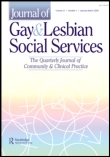Resumen
BACKGROUND: The relationship between homelessness and HIV has been widely documented. Studies have highlighted the impact of homelessness and HIV testing and care outcomes and less focus have been placed in understanding how the diverse levels of unstable housing (not being able to pay rent, residential transients, living in public housing, SROs, shelters) affect HIV testing and risk practices. Our study examined self-reported experiences of unstable housing and how it relates to HIV prevention practices among Latinx MSM in Puerto Rico (PR).
METHODS: In June 2017, data about HIV prevention practices and socio-behavioral characteristics were collected from an online sample of 256 Latinx MSM. Eligibility criteria were Spanish-speaking MSM, '¥18 years, self-reporting HIV-negative, and residing in PR. The primary outcome was the self-reported experience of unstable housing and concerns of losing their homes in the following months. Bivariate analysis was used to understand the relationship between unstable housing, HIV prevention (i.e. testing), and risk practices (i.e. condomless sex and no PrEP use). RESULTS: Participant mean age was 30.5yrs. Most lived in non-metropolitan areas (56.7%), had completed at least high-school (92.58%), were employed (73.05%) and had an annual income of <$20,000 (57.42%). Most had ever tested for HIV (92.6%). Overall,12.1% of participants had ever been without a safe place to live and 27.7% had concerns about losing their home in the following months. Participants with experience of not having a safe place to live were less likely to test for HIV in the next 6 months (p-value=0.0094) and more likely to engage in risky sexual practices (p-value=0.0241). Furthermore, participants with concerns about losing their home in the following months were more likely to report recent (last 90 days) risky sexual practices (p-value<0.001).
CONCLUSIONS: Findings suggest that not only the experience of not having stable housing but concerns of not having a safe place to live in the future might influence HIV prevention practices and risk practices among this group. It is necessary to develop research the looks more in-depth into this relationship and that informs structural and culturally-relevant interventions to mitigate the risk of HIV for people who experience unstable housing.





